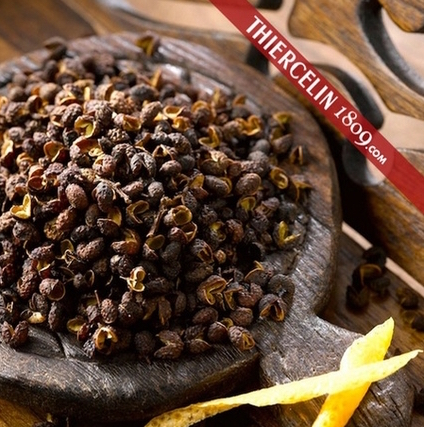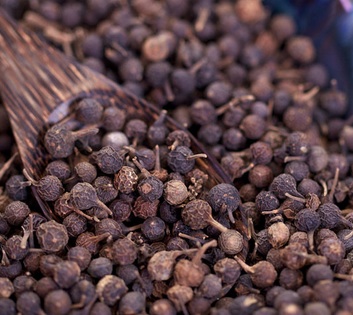Timut - the "grapefruit pepper"
es the same numbing sensation on the tongue. Its dried and crushed shells (rather than the berries) are consumed, and they give off a fantastically powerful and slightly pungent aroma. With top notes of lemon and grapefruit, the timut pepper is perfect in broth or in preparing shellfish, fish, duck, veal liver and chocolate desserts.Found on the foothills of the Himalayas in northern Nepal, the Timut pepper belongs to the same family as the Sichuan pepper and provid Surprising for its unique and incomparable fragrance, Timut is THE rare flavor of the moment in the kitchens of the grand chefs. Similar in form to the Sichuan pepper, only smaller and darker, the timut's citrous scent is intense and its grapefruit perfume intoxicating. Amazingly, the pepper is 100% natural and has not undergone any treatment or flavoring.
Use
Pepper Timut Nepal agrees very well with shellfish, fish, and duck - not to mention chocolate desserts. Try Timut pepper on lobster or coquille Saint- Jacques. A true delight - with lobster sublime.Timut pepper must be ground before use. You can put it in your usual grinder or crush it in a mortar. Unlike the Tasmanian or rose peppers, which are softer and more pliable, the Timut pepper is coarse enough to pass through a mill.
For true fans, we also offer a fabulous "grapefruit pepper" syrup made from the Timut pepper, a real treat that lets your imagination run wild in an easy to use format: on ice cream, fruit salad, to carmelize meat or fish, to deglaze a pot or even in cocktails.
Poached quince pepper Timur Nepal, gingerbread croutons
PREPARATION: 20 MIN. COOKING TIME: 2:20. FOR 4 PEOPLE• 4 quinces • 300 g sugar • 1 liter water • 2 g pepper Timur Nepal • 1 half lemon • 250g Gingerbread • 250 g lemon sorbet Menton • 60 g butter salty. Quince syrup: peel them, then the lemon. Cook (poach) for 1 hour over medium heat in a saucepan with a liter of water, sugar and pepper Timur Nepal. Once the quinces are soft and flexible, let them roast in the oven for 1:15 at 160°C, topped with syrup.
Gingerbread: cut gingerbread, slice into cubes and fry them in a skillet over low heat for 3 to 4 min, with a little salted butter until that they take on a golden color. Finishing: drop the cooled quince on a plate with gingerbread croutons and serve with a lemon sorbet Menton.



